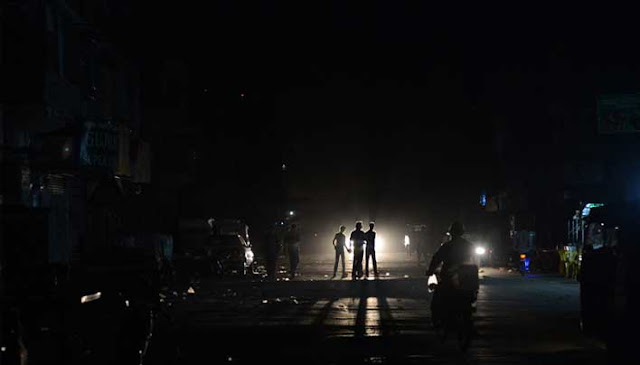Manjurul Ahsan
A government survey has claimed to have found 86.9 per cent of the consumers satisfied with electricity supply when dissatisfaction with power outages and low voltage is widespread.
Unveiling the findings of the survey, carried out during off-peak season, officials on Monday at Bidyut Bhaban in the capital claimed that power supply in 2016-17 financial year was better compared with the previous six years.
Bangladesh Bureau of Statistics and Bangladesh Energy and Power Research Council jointly carried out the perception survey taking opinions of 9,927 consumers in October 2016 and 9,673 consumers in February 2017. Frequent power cuts and low voltage, however, cause severe public sufferings in six months from late March to early September, power distribution utility officials admitted.
Asked whether the survey reflected the reality with consumer sufferings in hot weather, power division secretary Ahmad Kaikaus said that the survey considered October as summer and February as winter. People in most of the rural areas in Rajshahi, Rangpur, Mymensingh, Barisal, Khulna and Chittagong divisions experienced frequent power cuts with acute low voltage problem in six months of 2017 from late March to September, New Age correspondents reported.
Low voltage, power cuts
Swapan Barman, rice processing yard owner at Durgapur in Netrakona, said that he experienced power cuts three to four times a day with low voltage problem which was severe during the past hot season until September.
Humayun Kabir, a farmer and resident at Babuganj in Barisal, said that they had experienced power cuts every one or one and a half hour during the past summer while frequency of power outages only eased in the current winter.
Jahidur Rahman, a residence of village Meramotpur of Charghat in Rajshahi, said that they were experiencing power cuts three to four times a day, which was hampering daily activities. They said that people continued experiencing power outages two to four times a day with low voltage even in the current winter — December and January.
In December, when power demand falls to one-third of summer demand, some 3,315 transformers burnt out as the mere lighting demand exceeded their capacities, according to a report prepared for power division’s monthly coordination meeting held on January 18.
The report also showed that 4,197 transformers were overloaded in meeting the winter demand, which would be five to six times higher in summer when the demand would go up for running fans and air conditioners, officials said.
Supply-demand mismatch
They claimed that the rural electrification was expanding faster than the expansion of distribution capacity, which was causing frequent power cuts and low voltage problem.
Rural Electrification Board chairman Moin Uddin said that the board had been providing new power connections at a rate of 3,00,000 to 3,50,000 per month which sometimes caused overloading. He said that they had built large stock of transformers to replace the overloaded ones while Kaikaus said that the government had taken initiatives to address the low voltage problem installing power plants in the country’s northern districts.
While addressing the report launching programme, prime minister’s energy adviser Tawfiq-e-Elahi Chowdhury said that the government now putting more emphasis on improving quality of electricity supply as a large number of new connections were provided.
Until December 2017, the Awami League-led government in nine consecutive years in office provided 16.8 million new power connections, 155 per cent of the total power consumers, until January 2009. The government, however, increased power transmission capacity by 2,631 line kilometres, hardly 33 per cent up from 7,991 line km, and distribution capacity by 159,631 line kim, 61 per cent up from 260,369 line km, over the same period of time.
The disparity between new connections and transmission and distribution capacities added to power cuts and low voltage problem.
The survey of BBS and research council showed that 11.20 per cent people were very satisfied, 45.80 per cent satisfied, 29.9 per cent moderately satisfied and 13.1 per cent not satisfied at all.
The interviewees through mobile phones responded to a question whether they were satisfied with the service or management of electricity supply.
In January 2015, the BBS also carried out another survey claiming that 89 per cent people were satisfied with power supply to households in 2014 compared to that of 2008 and 2009.
The survey findings drew severe criticism at that time as BBS collected data in January when the incidents of power cuts become negligible or have insignificant impact on common people.
- Courtesy: New Age/Jan 23, 2018

No comments:
Post a Comment